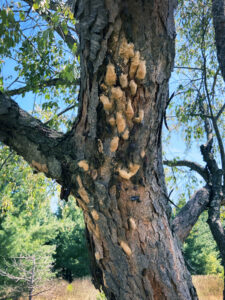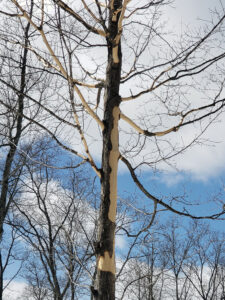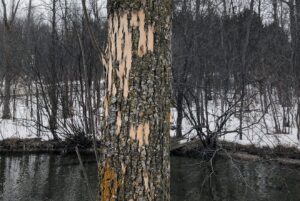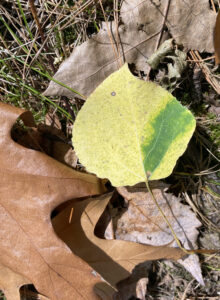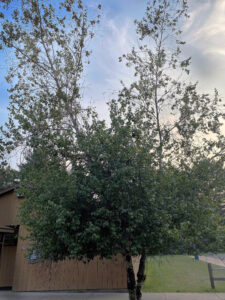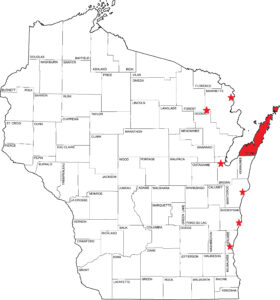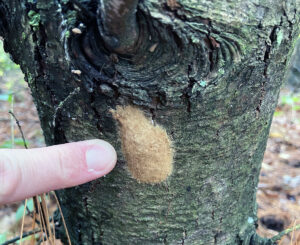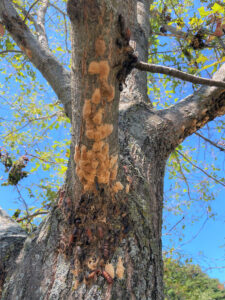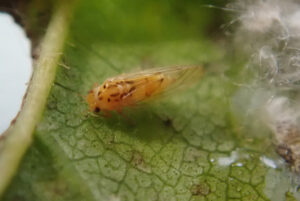
A close-up photo of an adult cottony ash psyllid feeding on an ash leaf. / Photo Credit: Steve Garske, Great Lakes Indian Fish and Wildlife Commission
By Linda Williams, DNR Forest Health Specialist, Woodruff
Linda.Williams@wisconsin.gov or 920-360-0665
As if black ash trees don’t have enough problems with emerald ash borer (EAB), another ash pest recently was found at several locations in northern Wisconsin.
In June, Great Lakes Indian Fish and Wildlife Commission (GLIFWC) staff noticed black ash with leaf curling and puckering, early leaf drop and dieback at one of their Climate Change Program’s long-term phenology study sites.
After working with DNR Forest Health staff to narrow down the possibilities, insect samples were collected and sent to P.J. Liesch, director of the University of Wisconsin-Madison Insect Diagnostic Laboratory, for official identification. He identified them as cottony ash psyllid.
Continue reading “Another Ash Pest Found In Northern Wisconsin” →

